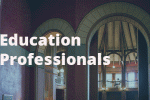Planning for college or training this year? Apply for the Vermont Grant.
Federal Education Loans: The Story Behind the Story
By Don Vickers
Vermont Student Assistance Corporation (VSAC) spent many years providing education loans to Vermont students and parents through the Federal Family Education Loan Program (FFELP). We stopped making federal loans in July 2010 when the government switched to a system of “direct lending” to families through the colleges students attend.
One of the questions we received the most during our final years in FFELP was why federal loan interest rates had risen so high. Even though we no longer issue new federal loans, we still get that question. Many Vermonters assumed that direct lending would result in lower rates, but that was never part of the plan. Nor are there any rate relief proposals on the horizon.
The sad truth is that rates were, and are, high because the government makes substantial profit on the loans. For this academic year, the government borrowed money at rates ranging from about half of a percent to a little more than 2 percent. It then charged 3.4 percent to “subsidized” Stafford borrowers (undergrads with the greatest financial need), 6.8 percent to unsubsidized Stafford borrowers (other undergrads and grad students), and 7.9 percent to PLUS borrowers (undergrad parents and grad students). Next year, all Stafford borrowers, regardless of need, will pay 6.8 percent.
During much of VSAC’s tenure in FFELP, we were able to ease the burden of government-set rates by providing our borrowers with discounts, rebates, and fee waivers on their federal loans. We continue to discount pre-2010 federal loans that we still service. These benefits have saved our borrowers $154.5 million since 1995. In contrast, students who borrow through the direct loan program are offered only a minimal discount if they repay their loans using auto-debit.
The issue of interest rates has been completely lost in the hoopla over the administration’s recent proposal to offer federal borrowers two forms of loan relief. Unfortunately, the proposal skirts the real problem facing today’s students: graduating college with excessive debt and uncertain job prospects.
So what is being offered?
Students still in school will be eligible for an expanded, income-based loan repayment program that provides loan forgiveness after 20 years. This is wonderful, as long as you are able to qualify each year (meaning you spend all 20 years in low-wage professions). If your income rises, you not only lose eligibility for the program, but you are responsible for the substantial interest that built up while you made artificially low payments.
For students already out of college and repaying loans to lenders like VSAC, the proposal offers a quarter-percent incentive to transfer your loans to the government and another quarter percent for using auto-debit. However, these transferred loans will still cost upwards of 8 percent. More importantly, many VSAC borrowers who transfer loans will lose far more generous benefits than those the feds are offering.
During our years in FFELP, VSAC used a personalized approach to loan counseling. We advised students and parents on when to borrow, which loan types were most beneficial, how to minimize borrowing, and the pros and cons of consolidating loans once a student finished school. This was a labor-intensive exercise for VSAC, but enabled many of our borrowers to avoid unexpected pitfalls and expense.
In contrast, the administration wants to encourage as many borrowers as possible to transfer their loans to the government, regardless of each borrower’s unique situation. To do this, the government’s four national loan servicers would call every potentially eligible student to encourage him or her to come on board. So much for helping borrowers grasp the short- and long-term consequences of their loan decisions.
If the government is really interested in helping students, it should do three things: reduce interest rates on loans so that they more accurately reflect today’s low-interest environment; require loan servicers to provide real counseling, not just a sales pitch; and implement the vision of Vermont’s congressional delegation to make education more affordable by increasing grant aid and offering true loan forgiveness.
Students may owe Uncle Sam, but we owe them much more.
Don Vickers, a resident of Georgia, VT, is president and CEO of Vermont Student Assistance Corporation.
This entry was posted on Tuesday, November 8th, 2011 at 8:21 am and is filed under News & Views, VSAC News Releases. Both comments and pings are currently closed.


